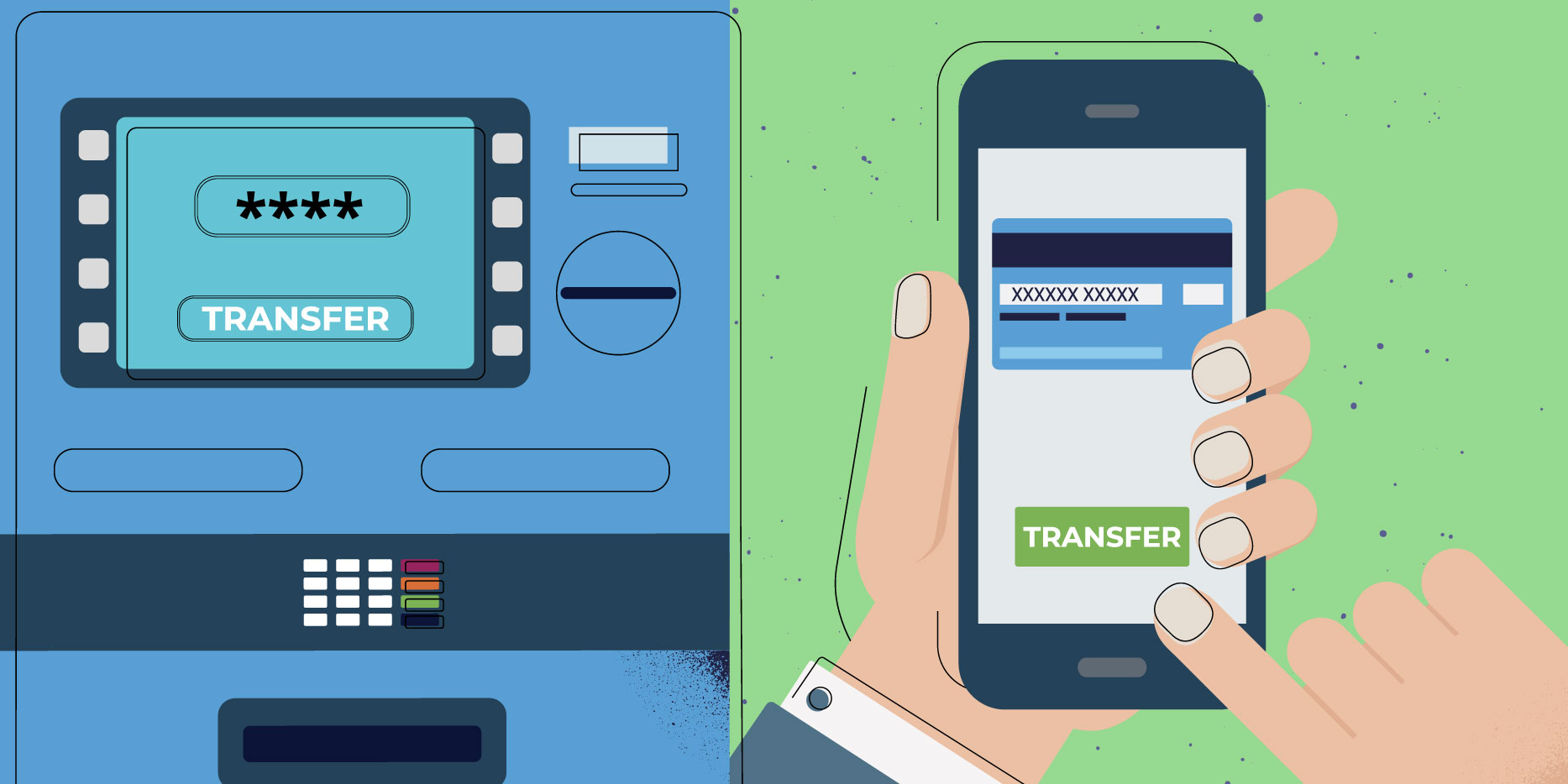
This post details key differences between transfer types and how to prevent instant transfers from becoming instant fraud losses.
Changes to the payments landscape
Amazon’s same-day delivery option has met increased consumer expectations by finding a faster and more customer-centric way to provide what the traditional 3-5 business day delivery window previously offered customers. This same thought process can be applied to the payments landscape, as customers want the ability to send and receive money not in a matter of days, but in a matter of minutes. Traditional ways of transferring money, such as wire transfers, still provide avenues for customers to send and receive money, but that’s only one piece of the puzzle. Customers now expect their banking options to align with other aspects of their lives. Just like same-day deliveries, consumers want same-day payments.
Instant transfers (also frequently referred to as instant payments or real-time payments) help address this customer need. As the name aptly implies, instant transfers enable consumers to make payments instantly. Unlike traditional transfers that typically move money within a few days, instant transfers send and receive funds in a matter of seconds.
Batch payments processing vs. real-time payment processing
Traditional money transfers are processed in batches. When banks process transfers in batches, they process all of their transactions in large groupings at specific times throughout the day (designated by the individual bank), regardless of what time the transfer was initiated. Instant transfers, on the other hand, are processed in real-time. When a customer initiates a payment, the bank processes that transaction as it comes through their system — allowing the funds to be available in real-time.
Although same-day deliveries have met increased customer expectations and provide an alternative option for customers to take advantage of, they didn’t eliminate traditional deliveries. Again, this same logic can be applied to the payments landscape. Over the past decade or so, instant transfers have continued to gain both popularity and traction, but they haven’t eliminated traditional tried-and-true transfers. In order to understand instant transfers and the key characteristics that appeal to both banks and customers, we must first understand traditional transfer types.
Traditional Transfers
To get started, we must understand a few key features of traditional transfers. For the sake of simplicity, we can think of most traditional transfer types as electronic transfers of money that use a network. These transfers are usually traditional bank-to-bank transfers where money is moved typically within 1-2 business days. In the US, same-day transfers are possible, and international transfers may take an additional day or two. Still, banks process most of these transfers within a few business days.
When it comes to initiating a transfer, the exact details may vary from bank-to-bank and depend on which type of transfer you initiate. Nevertheless, there are a few universal characteristics of the process. For example, you most likely will need:
- The name of the bank you are sending money to
- The account number of the individual you are sending money to
- The American Bankers Association (ABA) routing number of the bank you are sending money to
Banks require this information via a paper form or online (many banks accept wire transfers online, but some may require you to fill out a physical form depending on your bank). For large transfer amounts, banks often require customers to make a branch visit. In addition to the above information, wire transfers also cost money to send and often have fees associated with receiving them. Depending on whether or not the wire transfer is domestic or international, fees can reach upwards of $50 depending on the transfer.
If you’re on the receiving end of a wire transfer, the ABA number may not be used and instead be replaced with a SWIFT code. It’s important to note that SWIFT does not actually transfer funds, but instead serves as a messaging system that facilitates the sending of funds.
Instant Transfers
Now that we’ve taken a look at some of the common non-instant transfer types across the globe, the following section explores the Amazon same-day delivery equivalent in the payments landscape: instant payments. As previously mentioned, the biggest difference between traditional transfers and instant transfers is batch vs. real-time processing. But what does batch processing vs. real-time processing look like?
Let’s take a look at a peer to peer (P2P) transfer example between two friends, Sam and Tom, using a non-instant transfer type, like an ACH transfer. Sam submits an ACH transfer to her friend Tom at 10:00 am EST, but her bank won’t process that payment until it processes all of its transfers at its designated batch processing time at 5:00 pm EST. This means that Tom will not receive his payment from Sam in real-time, because Sam’s bank does not process her payment to him in real-time. If Sam’s bank provided its customers with instant payment options, Sam would have been able to initiate her payment at 10:00 am EST, and the funds would have been processed and available in Tom’s account most likely by 10:01 am EST.
The benefits customers enjoy with instant payments are clear. Customers are able to make convenient payments 24 hours a day, 7 days a week, 365 days a year and funds are almost always immediately available. In addition to money being sent instantly, the sender receives real-time confirmation that the funds have been credited to the beneficiary account since settlements also happen in real-time. And because of their popularity with customers, instant transfer types are popping up around the globe.
Combating Fraud in The World of Instant Transfers
Both traditional transfers and instant transfers provide customers and businesses a way of facilitating payments. But due to the real-time processing and payouts of instant transfers, these payment types will not only increase in popularity but also increase their exposure to risk.
Instant transfers can provide instant payments, but they can also provide instant fraud losses. Any payment that is initiated and available in real-time creates higher fraud percentages because the funds are immediately available in fraudsters’ accounts. Unlike traditional transfers, victims do not have time to contact their banks to cancel payments before the money has been moved and banks do not have time to manually review transactions since they need to be accepted and declined immediately. This makes instant payments a fraudster’s dream come true.
Scammers take advantage of both traditional transfers and instant transfers through several fraud schemes designed to exploit their victims. The list below outlines some common examples of these scenarios. Although they can be applied to both traditional and instant transfers, the impact they have on instant transfers is often irrevocable. Funds are moved and finalized before the victim even has time to realize they have fallen victim to an attack.
Common types of fraud schemes:
- Authorized Push Payment (APP) Fraud: Criminals trick victims into transferring money to their accounts, usually by impersonating legitimate people or organizations.
- Account Takeover (ATO) Fraud: Fraudsters gain access to an account by stealing personally identifiable information and transfer money out of the account.
- Phishing: Criminals use deceptive emails, calls, and websites (often pretending to be from a legitimate source) to gain access to a person’s finances.
- Money Mules: Someone who, knowingly or unknowingly, transfers illegally acquired money on behalf of, or at the direction of, another. This is a common way to launder money.
- Fake Invoice Fraud: A false invoice that appears to be real.
- Mandate Fraud: An employee is tricked into changing a regular payment to a fraudster’s account.
- Payroll Schemes: This scenario may occur in three ways: employee time reporting fraud, payroll/clerk redirects terminated employees pay to his or her own account(s), and deliberate misclassification of W2 employees as 1099.
- CEO Fraud: Scammers impersonate executives via email or deepfake calls to get an employee in accounting or finance into executing unauthorized payments.
As outlined by these fraud schemes, fraudsters don’t lack creativity when it comes to finding new ways to commit fraud. From phishing schemes intended to exploit crises for cash (which is, unfortunately, a common occurrence for COVID-19) to increases in authorized push payment or account takeover fraud, criminals are always looking for ways to exploit systems. Although these scenarios can impact traditional transfers, payments processed in real-time are even more vulnerable to these attacks as money can be moved into fraudsters’ accounts instantly.
In the world of instant payments, it’s critical for banks to be able to effectively assess risk in real-time. Thorough risk management is crucial to ensure the legitimacy of these payments, but customers should not feel the effects of increased security. Banks must walk the line between increasing security to combat fraud effectively without customers jumping through hoops to provide additional authentication or experiencing increased restrictions or declines on their legitimate transactions. If banks are successful in doing so, they can turn the world of instant payments into instant possibilities.
For handy charts and detailed information on global transfer networks and specific transfer per region, download our ebook, Money on the Move: Understanding Traditional vs. Instant Transfers.
Share this article:
Santiago del Puerto
Santiago del Puerto is the Fraud Product Manager at Feedzai. He's a payments and fraud specialist with an engineering background passionate about building and turning complex products into simple and lovable solutions for fast adoption.
Related Posts
0 Comments4 Minutes
Feedzai’s AI Technology Earns Industry Recognition by Chartis
Feedzai, the world’s first RiskOps platform, has secured a pair of critical recognitions…
0 Comments6 Minutes
10 Fraud Prevention Tips for Businesses
Hopefully, you’ve had a chance to read Feedzai’s James Hunt’s insightful conversation…
0 Comments7 Minutes
Beyond the Face: Why Vietnam’s Banks Need Behavioral Biometrics to Fight the Rising Tide of Fraud
Financial transactions are increasingly virtual in today’s digital age, making fraud…
